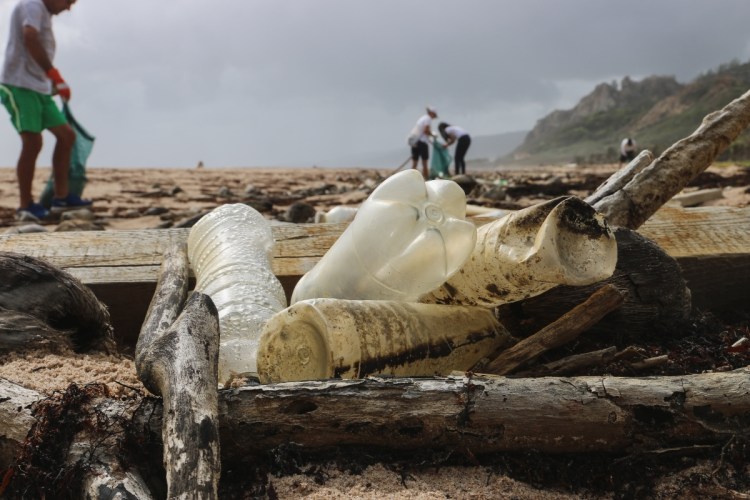The Plastic Pollution Problem
Over 300 million tons of plastic is produced each year and half of this is for single-use purposes. Products with a lifespan less than a minute can take up to 1,000 years to degrade in landfills. Enough plastic is thrown away each year to circle the Earth four times but where does the plastic go?
Plastic litters our woodlands and natural environments or arrives at landfill sites but ultimately ends up in our oceans. The damage it causes to marine life is devastating. Only 9 per cent of all plastic ever produced has been recycled.

Plastic in our oceans
Over 8 million metric tons of plastic is leaked into our oceans every year, 80 per cent of this comes from the land. The most common found include cigarette butts, plastic bags and bottles as well as bottle caps. The amount of plastic entering the ocean is unsustainable and if the world continues to produce and throw away plastic at the same rate then by 2050 there will be more plastic in the oceans than fish.
Marine life has been greatly impacted by plastic’s favourite rubbish dump. With over 90% of all sea birds containing plastic pieces in their stomachs. Albatross parents have been seen to mistake floating plastic for food which they fly back to land to give to their chicks. This has led to an increase in mortality rates due to lack of nutrition from the indigestible plastic.
Not only is plastic pollution impacting on birds but a further 1 in 3 marine animals have been found tangled up in marine litter. All known species of sea turtle have been affected by entanglement. It comes as no surprise that fatal entanglement has increased by 40% in the last decade.
Great Pacific Garbage Patch
Some of us may not understand the severity of the plastic issue and perhaps these facts will shock you. There is an island in the middle of the North Pacific Gyre, the Great Pacific Garbage Patch – this is mainly composed of plastic. It is the size of India, Europe and Mexico combined. To think that there is a whole island made of plastic is truly devastating and disturbing.
Every day the amount of plastic collected on this island is increasing. A 2018 scientific report put the Great Pacific Garbage Patch at 1.6 million km2. Although the size of the patch is difficult to predict they have estimated that within the next decade this will double in size. What will this mean for marine life?
What is being done to combat plastic pollution?
Some people are taking matters into their own hands and making a conscious effort to reduce their usage of single use plastic. This can vary from buying a reusable water bottle, to purchasing metal or bamboo straws. Simply remembering your reusable bags when you go to the shops is a step in the right direction.
Two Australian surfers created a floating trash bin called the Seabin. It is an automated marina rubbish bin that collects floating rubbish, debris and oil 24/7, according to its owners. In comparison to trash boats which are expensive to operate and maintain, the Seabin uses a water pump (which uses an onshore power source) and creates a flow of water into the bin which carries trash with it… It’s inventions like these the world needs to start seeing more of. How can we clean up the plastic, especially that which is floating in the middle of the ocean?
Conclusion
The sad truth is that since plastic was first invented, everything ever made by this material still exists today. Sustainable solutions need to surface, and we also need to make a conscious effort to pick up trash, even if it’s not yours. There are plenty of organisations who organise litter picks, or beach litter walks, the National Trust is a great resource to use to find local events. Whatever you are doing this weekend, if you see something littering the environment, pick it up and make a difference.



0 Comments